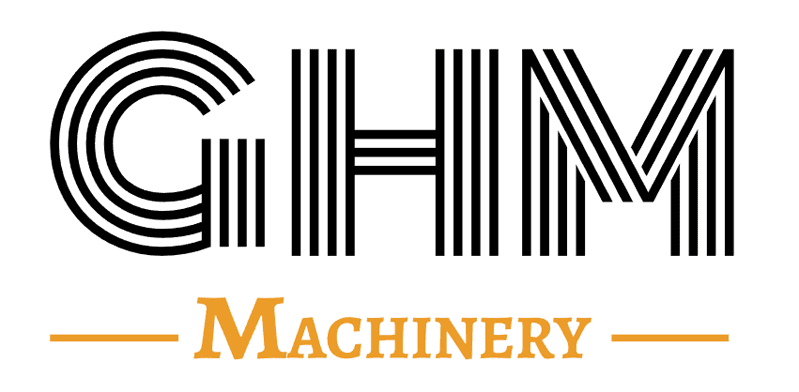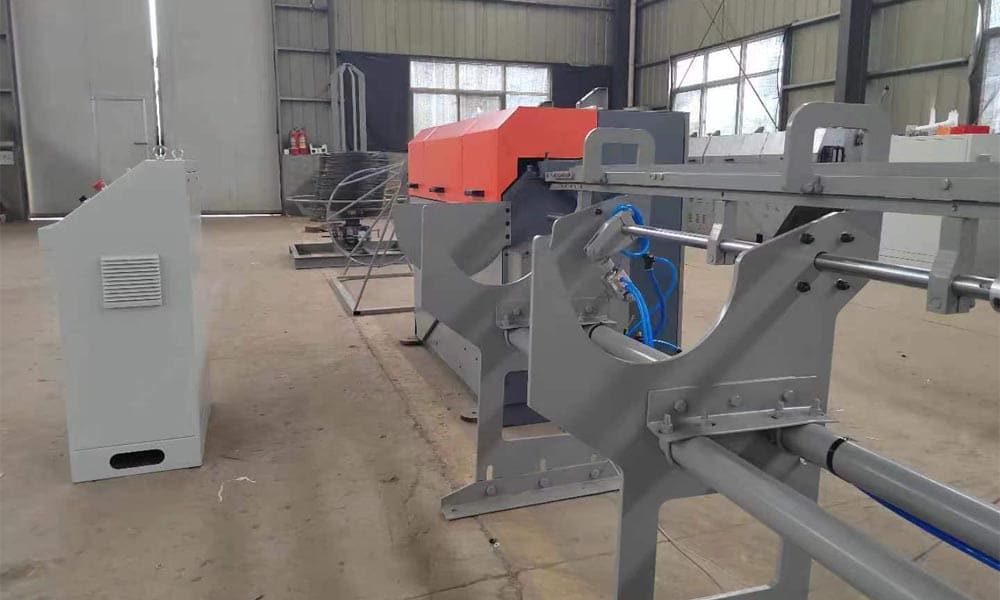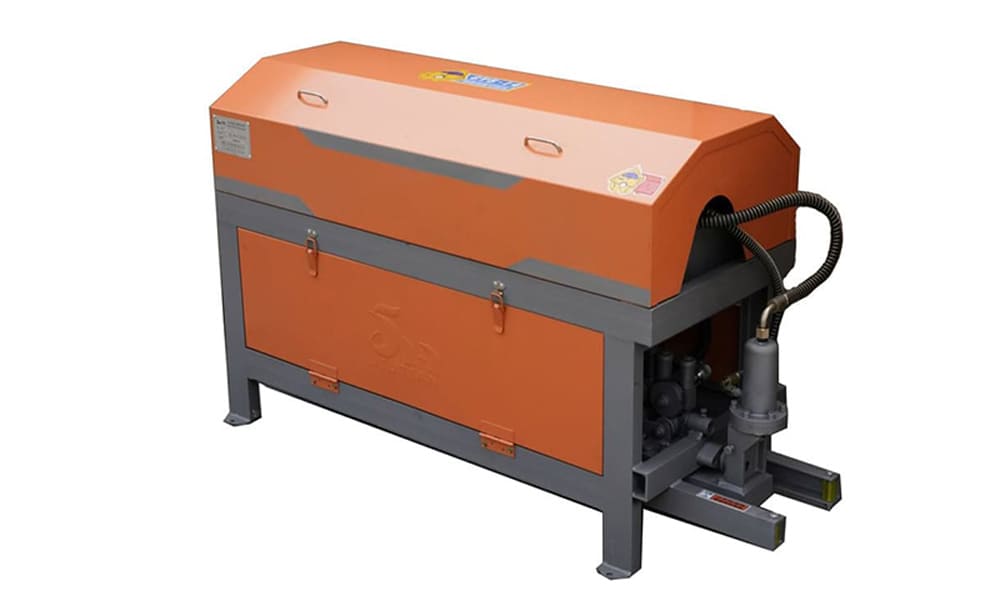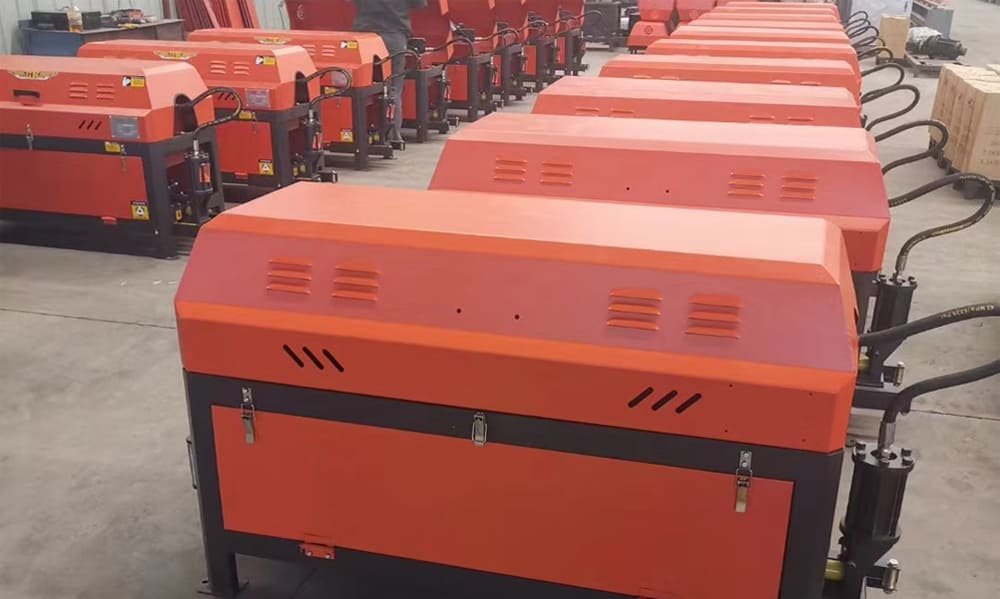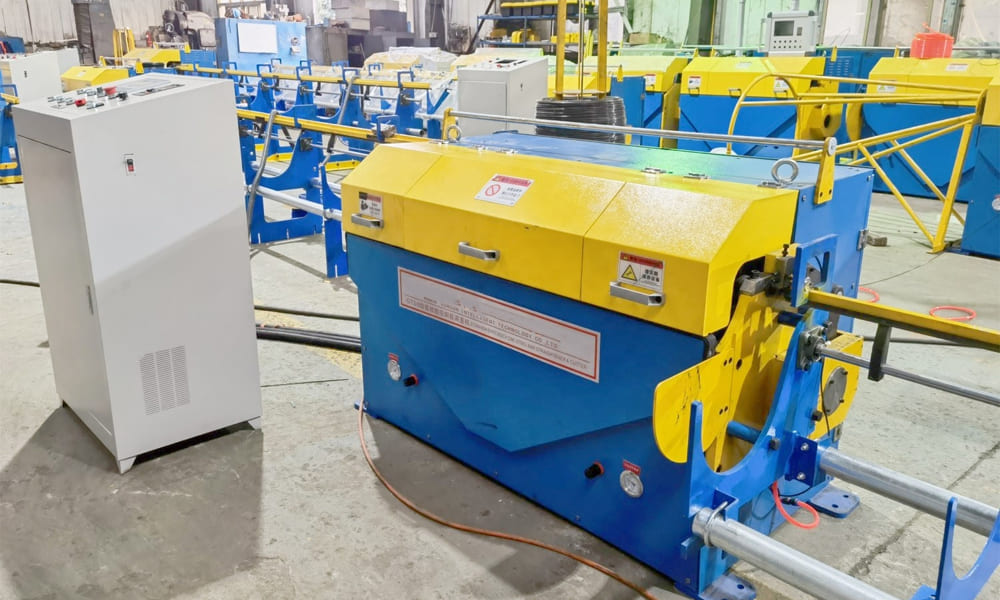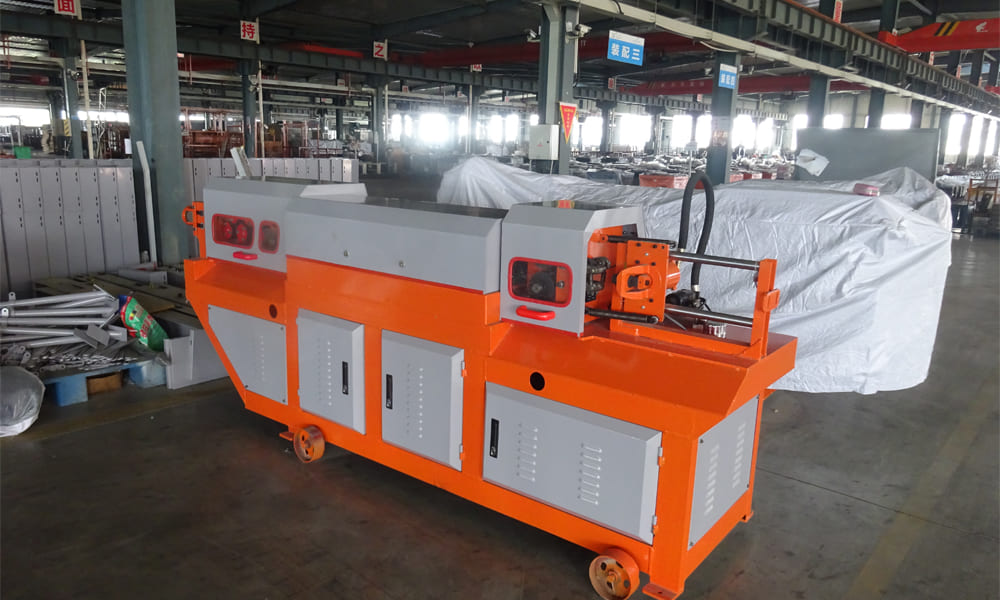What Is Steel Bar Straightening and Cutting Machine?
A Steel Bar Straightening Machine is a specialized piece of equipment used in the construction and manufacturing industries to process steel reinforcing bars (rebar). These machines are designed to take coiled rebar or other deformed bars and straighten them into a linear form before cutting them to specific lengths as required for construction projects. Here’s an overview of its components, functions, and benefits:
GT6-14 Rebar Straightening and Cutting Machine
Components of a Rebar Straightening and Cutting Machine
- Pay-off Frame: This is where the coiled rebar is loaded. It feeds the raw material into the machine.
- Straightening Unit: This part of the machine is responsible for straightening the rebar. It usually employs a series of rollers or a rotating hub to remove the bends and kinks from the rebar.
- Feeding Mechanism: This system pulls the rebar through the straightening unit and ensures a consistent feed rate.
- Cutting Unit: After straightening, the rebar is fed into the cutting unit, which cuts the rebar to the specified lengths. This unit can use different types of cutting mechanisms, such as shears or saws.
- Control System: Modern machines are equipped with computerized control systems that allow for precise control of the straightening and cutting processes. These systems can be programmed with specific lengths and quantities, and they monitor the operation to ensure accuracy.
- Collection Rack: The finished, cut rebar is collected here, ready for transport to the next stage of the construction process.
Functions of a Rebar Straightening and Cutting Machine
- Straightening: The primary function is to straighten coiled or bent rebar to a usable, linear form. This is crucial because rebar needs to be straight to provide effective reinforcement in concrete structures.
- Cutting: The machine cuts the straightened rebar into specified lengths, which are then used in various construction applications.
- Sizing: Advanced machines can also measure the rebar to ensure each piece is cut to the precise length required.
Benefits of Using a Rebar Straightening and Cutting Machine
- Increased Efficiency: Automating the straightening and cutting processes saves significant time compared to manual methods, increasing overall productivity.
- Precision: These machines can cut rebar to very precise lengths, which is critical for maintaining the structural integrity of construction projects.
- Consistency: Automated machines provide consistent results, reducing the variability that can occur with manual labor.
- Labor Savings: By automating these processes, fewer workers are needed, and those that are required can focus on more skilled tasks.
- Material Utilization: Efficient cutting means less waste, as the machine can optimize the lengths of rebar cut from each coil or bundle.
- Safety: Automating the rebar processing reduces the risk of injuries associated with manual straightening and cutting.
Applications
Rebar straightening and cutting machines are used in various construction projects, including:
- Building construction
- Infrastructure projects like bridges and roads
- Prefabricated concrete products
- Any project requiring reinforced concrete structures
By streamlining the rebar preparation process, these machines play a critical role in modern construction, ensuring that projects can proceed efficiently, safely, and with high-quality materials.
How Much Error Is Reasonable for the Steel Bar Straightening Machine?
Determining a reasonable error range for a steel bar straightening machine depends on several factors, including the specific application, the type of steel being processed, and the performance capabilities of the machine. Generally, for most construction and industrial purposes, the following guidelines can be considered:
- General Construction Use:
- Error Range: ±1-2 mm
- This range is typically acceptable for most construction projects where steel bars are used for reinforcing concrete and other general structural purposes.
- High-Precision Applications:
- Error Range: ±0.5-1 mm
- For applications requiring higher precision, such as in manufacturing components for machinery or specialized structural elements, a tighter error range is necessary to ensure proper fit and performance.
- Influencing Factors:
- Steel Specifications: Higher grades of steel or those used in critical applications may require stricter tolerances.
- Machine Performance: High-performance straightening machines with advanced features like automatic tracking and adjustment systems can achieve tighter tolerances.
- Operator Skill and Maintenance: Proper training for operators and regular maintenance of the straightening machine can help achieve and maintain the desired accuracy.
Summary
A reasonable error range for a steel bar straightening machine typically falls between ±1-2 mm for general construction use. For high-precision applications, the acceptable error range may be tighter, around ±0.5-1 mm. The specific range should be determined based on the application requirements, machine capabilities, and other influencing factors to ensure the quality and performance of the steel bars.
